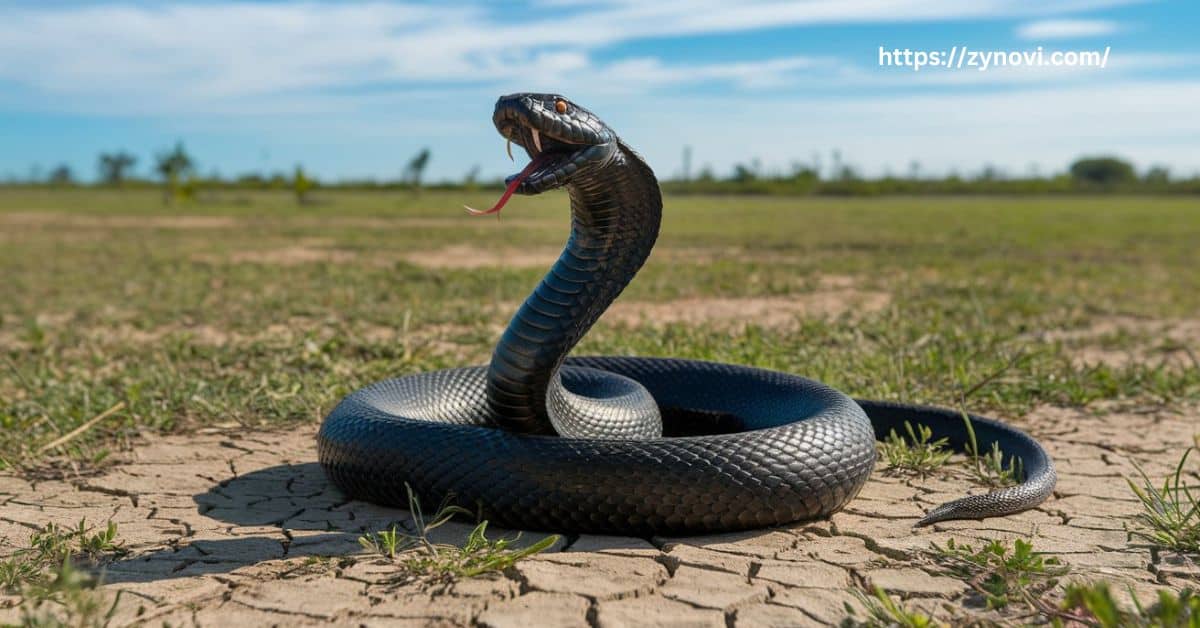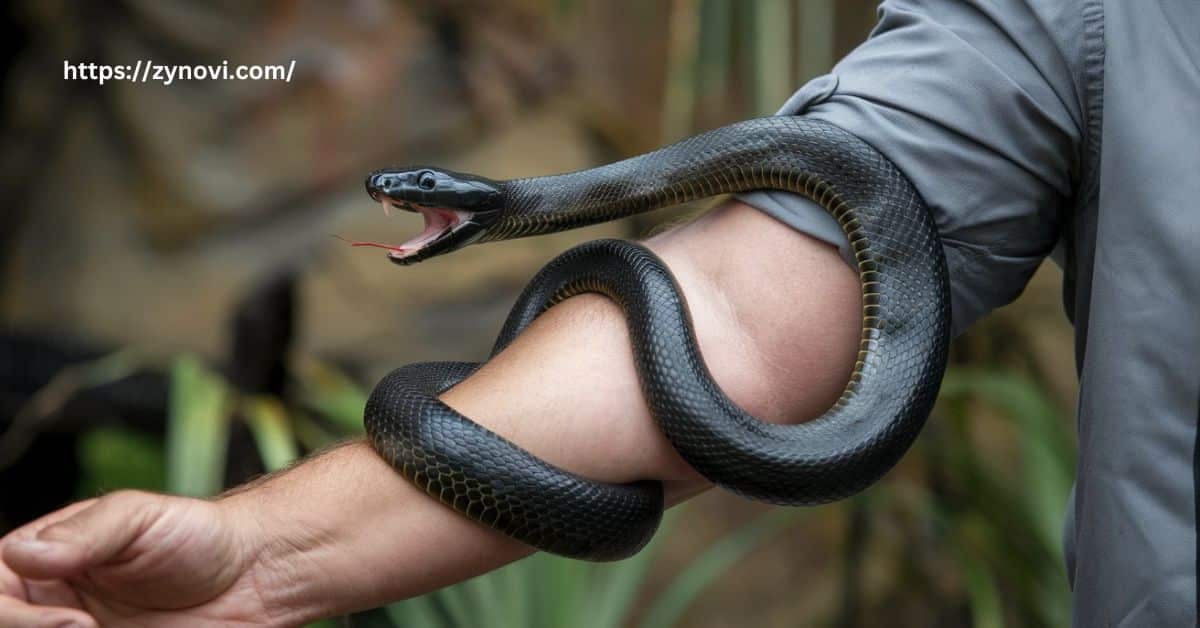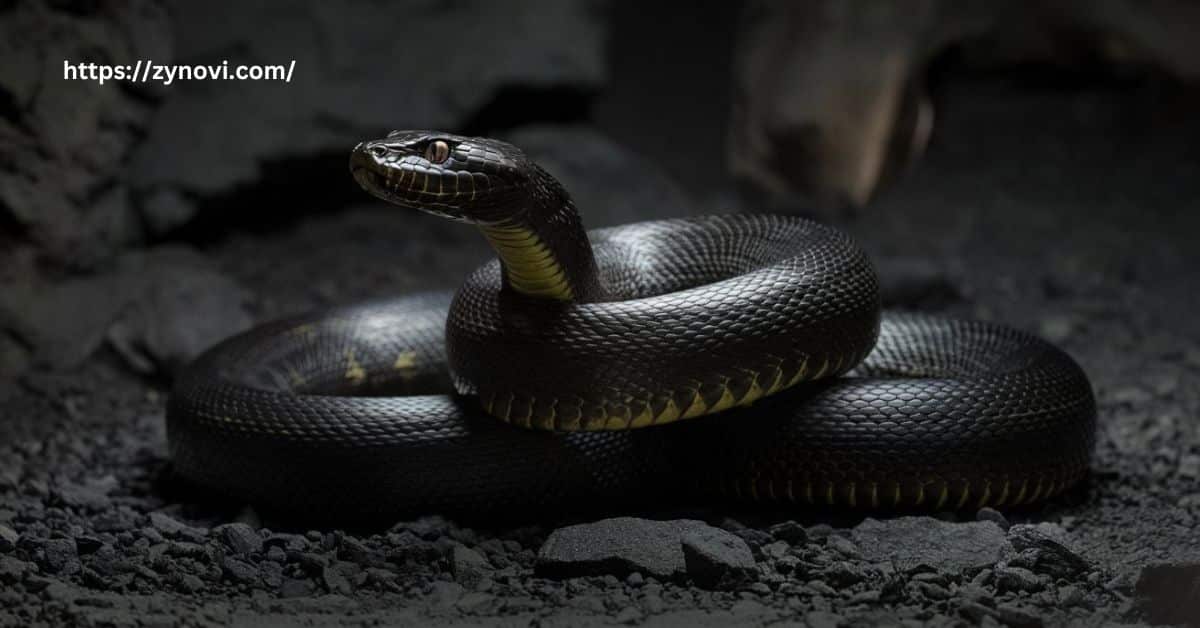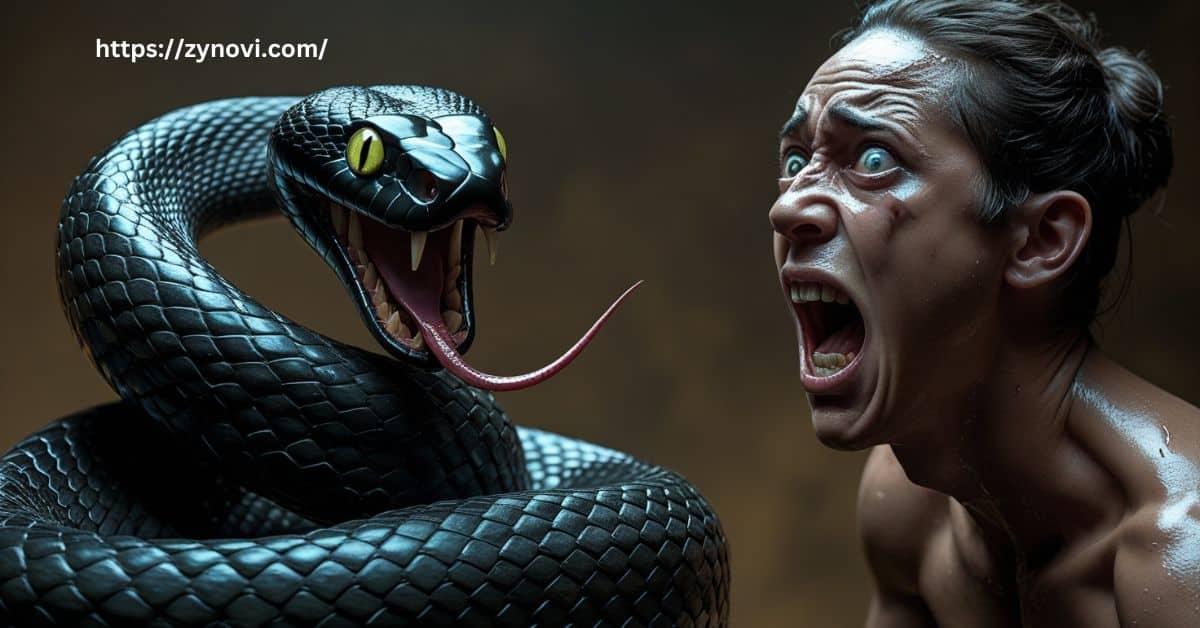Do Black Mambas Attack Humans? No, black mambas don’t typically attack humans, but they will strike if threatened or provoked.
The black mamba’s name alone strikes fear into many, but are they truly a threat to humans? With their reputation as one of the deadliest snakes in the world, it’s natural to wonder how dangerous these creatures really are.
In this article, we’ll uncover the truth behind their aggressive behaviors, venomous bite, and how you can stay safe in black mamba territory. Whether you’re curious or planning a trip to areas where these snakes are found, knowing how to avoid an encounter is crucial. Let’s dive in and separate fact from fear!
What is a Black Mamba?
The black mamba (Dendroaspis polylepis) is a large, venomous snake native to Sub-Saharan Africa. Contrary to its name, the snake’s body is not black but ranges from gray to olive-brown.
Black mambas are both feared and revered, earning their place as one of the deadliest snakes in the world. Known for their lethal venom, remarkable speed, and defensive aggression, they’re a creature of mystery and myth
Physical Attributes of the Black Mamba
| Attribute | Description |
|---|---|
| Length | One of the longest venomous snakes, averaging 8–10 feet, with some reaching up to 14 feet. |
| Weight | Weighs between 2–4 pounds, making it surprisingly light for its size. |
| Speed | The fastest terrestrial snake, capable of slithering at speeds up to 12 miles per hour. |
| Mouth Color | The name “black mamba” comes from the inky black interior of its mouth, displayed as a warning posture when threatened. |
Habitat and Distribution
Black mambas are primarily found in Sub-Saharan Africa, where they thrive in warm, dry environments. They prefer areas with ample hiding spots to stay concealed from predators and humans.
- Savannas: These vast grasslands provide an ideal hunting ground for black mambas, offering plenty of rodents and small prey.
- Rocky hills: The crevices and rock piles found in hilly regions serve as excellent hiding places, keeping them safe from predators.
- Open woodlands: Black mambas often inhabit wooded areas with scattered trees, where they can move freely while remaining camouflaged.
- Countries of Distribution: They are commonly found in South Africa, Namibia, Kenya, Tanzania, and Uganda, thriving in rural landscapes and less disturbed environments.
- Preferred Shelters: These snakes seek refuge in rock piles, hollow trees, and tall grass, using these natural formations to avoid threats and ambush prey.
Countries where they are commonly seen include South Africa, Namibia, Kenya, Tanzania, and Uganda. Black mambas prefer rock piles, hollow trees, and tall grass for shelter.
Diet and Hunting Behavior
Black mambas are both arboreal and terrestrial, meaning they hunt both on the ground and in trees. Their diet mainly consists of rodents, birds, and small mammals, which they ambush with incredible speed.
Using their potent neurotoxic venom, they deliver a lightning-fast bite, immobilizing prey within minutes. Once the venom takes effect, they swallow their meal whole, relying on their powerful digestive system.
Do Black Mambas Attack Humans?

Black mambas do not actively hunt humans, but human encounters can turn deadly due to their venomous bite.
Behavioral Traits of Black Mambas
Black mambas are generally shy and reclusive, preferring to avoid human contact whenever possible. However, when they feel threatened, they exhibit highly defensive behaviors to ward off potential dangers.
- Hissing loudly – When confronted, a black mamba emits a loud, deep hiss to warn predators or threats to back away. This serves as a first-line defense before escalating to more aggressive actions.
- Raising the front third of their body – If the threat persists, they lift their upper body off the ground, sometimes reaching three to four feet high, and spread their narrow neck, similar to a cobra.
- Displaying the black interior of their mouth – The signature inky black mouth is shown as an intimidation tactic, signaling that they are ready to strike if necessary. This striking display often deters predators from engaging further.
Reasons for Aggression
Though generally non-confrontational, black mambas may act aggressively under specific conditions:
- Feeling cornered or provoked: When unable to escape, they may strike repeatedly in self-defense, delivering rapid, venomous bites.
- During mating season: Males become highly territorial and may engage in combat with rivals, making them more prone to aggression.
- When startled during daylight hours: Being diurnal, black mambas are most active in daylight, and sudden disturbances can trigger an instinctive defensive response.
Defense Mechanisms
Black mambas prioritize escape over confrontation, using their incredible speed and stealth to flee from danger. However, when cornered or unable to retreat, they resort to aggressive self-defense tactics.
Their primary method of protection is a rapid, precise bite, delivering potent neurotoxic and cardiotoxic venom to neutralize the threat almost instantly.
Their defensive display, including hissing, raising their body, and flashing their black mouth, serves as a final warning before they strike.
Venom Effects on Humans
The black mamba’s venom is an extremely potent mix of neurotoxins and cardiotoxins, leading to severe and often fatal consequences if untreated:
- Respiratory failure – The venom paralyzes the diaphragm and chest muscles, making it impossible to breathe without medical intervention.
- Cardiac arrest – The cardiotoxins in the venom disrupt heart function, potentially causing a fatal heart attack within hours.
- Paralysis – The neurotoxins attack the nervous system, leading to progressive muscle paralysis, leaving the victim unable to move.
- High venom potency – A single bite can inject up to 400 mg of venom, while as little as 10–15 mg is enough to kill a human without treatment.
Human Encounters: Statistics and Context
- Mortality Rate: Without treatment, the bite has a 100% fatality rate within 7–15 hours.
- Frequency: While encounters are rare, most occur in rural areas or when the snake is accidentally stepped on or provoked.
- Notable Fact: Black mambas are responsible for a significant portion of snakebite deaths in Africa due to their lethality and distribution.
How to Prevent From Black Mamba Encounter

Avoiding a black mamba encounter is the best way to stay safe. Here are some prevention tips:
Tips for Staying Safe in Mamba Territory
- Wear thick boots and long pants: This provides a protective barrier against bites when walking through tall grass, rocky terrain, or dense undergrowth where black mambas may be hiding.
- Avoid rock piles, hollow trees, and other potential hiding spots: Black mambas seek shelter in rock crevices, termite mounds, and hollow logs, so steer clear of these areas to minimize risk.
- Use a walking stick to tap the ground: Tapping the ground creates vibrations, alerting snakes to your presence and giving them a chance to retreat rather than attack.
- Stay vigilant during daylight hours: Black mambas are diurnal, meaning they are most active during the day, particularly in warm temperatures, increasing the chances of an encounter.
Common Triggers to Avoid
- Do not provoke or corner a snake
- Black mambas are naturally reclusive, but if they feel trapped or threatened, they may respond with aggression to defend themselves.
- Avoid fast movements, which can be interpreted as a threat
- Sudden movements can startle the snake, triggering a defensive reaction, including hissing, striking, or fleeing at high speed.
Surviving a Black Mamba Bite: First Aid Treatment

If bitten by a black mamba, immediate action is critical.
Immediate Actions to Take
- Stay calm: Panicking increases heart rate, which can spread the venom more quickly through the bloodstream. Breathe deeply and focus on staying as still as possible.
- Apply a pressure bandage: Wrapping the affected limb with a firm (but not too tight) bandage can help slow venom absorption without cutting off circulation.
- Immobilize the bitten limb and keep it below heart level: Keeping the limb still and lower than the heart reduces the spread of venom, giving more time for medical treatment.
Modern Medical Treatments
- Antivenom: The only definitive treatment for a black mamba bite, antivenom is widely available in hospitals across Africa but may be harder to access in rural or remote areas. Immediate administration is crucial for survival.
- Respiratory support: If respiratory failure occurs, mechanical ventilation may be needed to assist breathing, as the venom paralyzes the respiratory muscles and can cause suffocation.
Prognosis After a Bite
- Survival rates : With timely administration of antivenom and emergency medical care, survival rates improve dramatically. Victims who receive treatment within an hour have a much higher chance of recovery.
- Delays in treatment : Delays in medical intervention significantly increase the risk of permanent neurological damage, cardiac arrest, or death, as venom can act rapidly to affect the nervous system and heart.
FAQs
Are black mambas aggressive to humans?
Black mambas are not naturally aggressive but may strike when threatened or cornered.
Can humans survive a black mamba bite?
Yes, humans can survive if treated quickly with antivenom, but without treatment, the bite can be fatal.
Will black mambas attack unprovoked?
Black mambas generally avoid humans and only attack if they feel threatened or provoked.
Can a human outrun a black mamba?
No, black mambas are the fastest snakes on land, reaching speeds of up to 12 miles per hour, far faster than a human can run.
Conclusion: Do Black Mambas Attack Humans?
Black mambas are among the most dangerous snakes in the world, but they do not actively seek out humans. Their venomous bite and defensive behaviors are typically a response to perceived threats in their environment.
These snakes are shy and prefer to avoid conflict whenever possible. By respecting their natural habitat and understanding their behavior, humans can significantly reduce the risk of dangerous encounters. Awareness, caution, and respect for wildlife can ensure both human safety and the preservation of these fascinating creatures.










